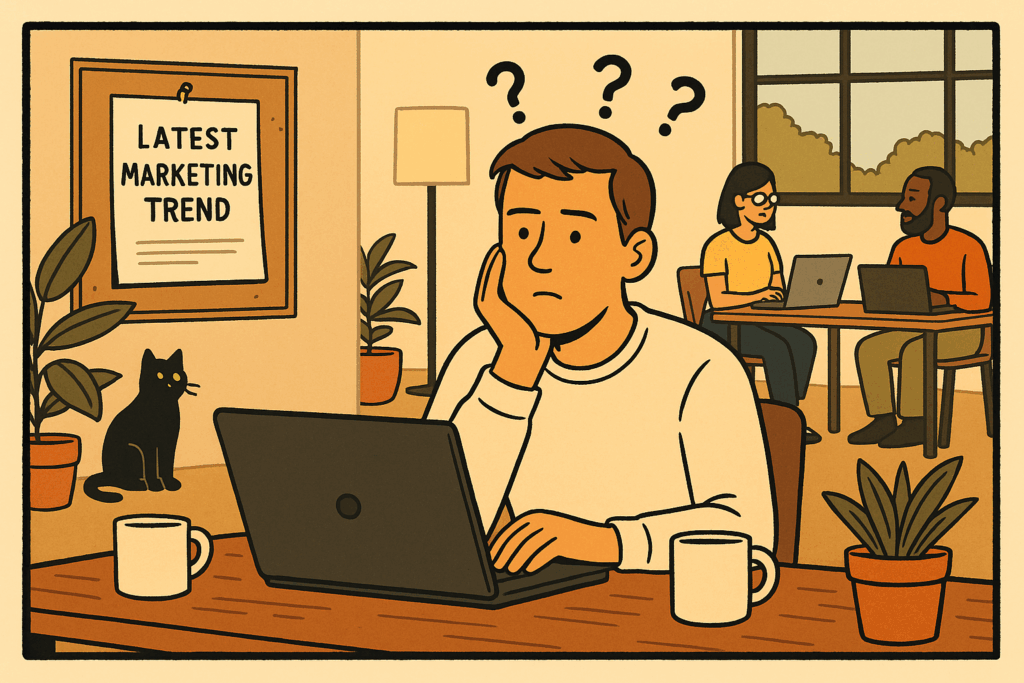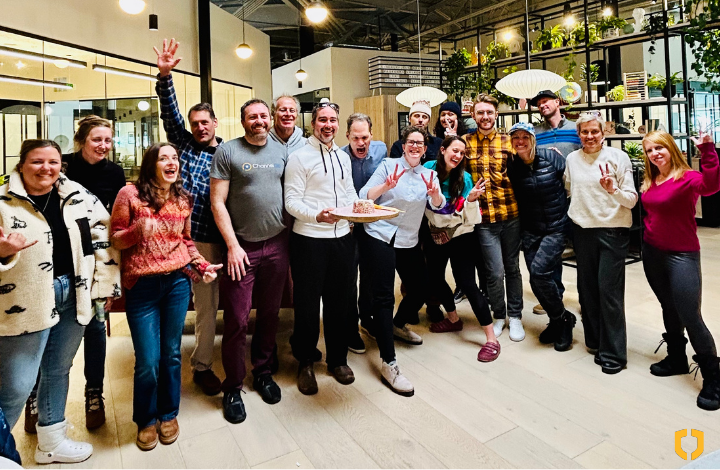Last week I got an email from a regular reader of my blog who let me know that the reason she hasn’t been very active with comments, emails or shares lately is that she’s not a blogger and I focus heavily on blogging.
The email was a great reminder that content includes much more than blogging.
As a writer, I write. All the time. Every day. For me, it’s fun and I’m confident doing it. But the same is not true of everyone, but that is no reason to avoid creating content.
A client of mine once confessed that he doesn’t like writing. He said he didn’t particularly like reading either, so he stays away from long blog posts. But this guy is a fantastic content creator. His social media posts get great engagement and he’s a natural on stage and in front of a video camera.
He creates content all the time, even though he rarely writes anything longer than a few lines.
So, apologies for getting all one-track-mind with you and prioritizing written content. It’s not the only type of content out there and, for some, it’s not a great type of content.
Moving forward, I’ll provide more resources and how-tos for a broader array of content creation and marketing.
Here are 7 content strategies for your coworking space that don’t include blogging. Of course, you’re welcome to blog about these other types of content you’re creating, embed them in your blog, market them with your blog (You do have a blog for your space, don’t you?), but if straight-ahead blogging is not your thing, don’t worry. Create something else. Do what works for you.
1. Video
As Jodi Harris writes in 23 Things to Consider When Creating Video Content, video is a “powerful storytelling medium” that can serve as a “prime proving ground for your business’ promotional campaigns, influential ideas, and experimental content efforts.”
If video is your thing, you’re in luck. It is quickly becoming a go-to way to share ideas and resources. Get out there and make some videos.
2. Social Media
Yes, social media is content. In fact, it’s the prime way to get your content out into the world. An increasing number of people get their news and information from their social media feeds which then direct readers to websites and blogs.
Treat your social media as the valuable content tool it is, not as a side note of your blog or platform. As Mike Templeman writes in Forbes, social media “should be one of the primary tools you utilize when deploying your content marketing strategy.”
He adds that engaging your social media followers and inviting them to share your content is an effective way to boost traffic and brand recognition saying, “[I]f you want your traffic to spike and the interest in your business to explode in a viral way, it’s a great idea to encourage your readers and social media followers to share your blog posts with their own social media circles.”
3. Streaming Video
In the article How Brands are Using Live Streaming Video Successfully, Kathy Klotz-Guest writes that “the future of streaming video success belongs to leaders that embrace conversation, being human, and letting go.”
Streaming video, unlike traditional video and blog posts and viral social media memes, is all about capturing a moment. It’s not about glossy presentation, perfect delivery, and scripted speeches by talking heads. It’s about giving people a real-life, behind the scenes glimpse into what you and your company are doing.
Finding the right streaming video platform for your space requires determining where your target audience is hanging out, but you have easy-to-use options that are built into platforms you’re already likely using, including Facebook Live (Facebook), Periscope (Twitter), Hangouts (YouTube) and—maybe you’re not using this one—Snapchat.
It takes a bit of bravery to jump into the streaming video world because it’s so insanely immediate. But, know and trust that the immediacy is what makes live streaming so powerful.
If you’re just not into live streaming yourself, enlist someone else from your space to do it. Chances are good you can find someone who’s already a pro at navigating the medium.
4. Podcasts
Podcasts are hot, hot, hot right now. I love them because they allow me to be hands-free AND eyes-free. They’re perfect for my long walks on the local nature trail and on train rides and commutes.
Pulling together a pro-sounding podcast requires time, some know-how and technical savvy, so it may not be realistic for everyone. But, if you’re drawn to it and have the resources to pull it off, podcasting may prove to be a great tool for growing your community, increasing brand awareness and positioning yourself as an industry leader.
The article Podcasting for Beginners: The Complete Guide to Getting Started With Podcasts will get you started and there are a ton of YouTube videos, blog posts, and websites dedicated to the art and craft of podcasting.
5. Infographics
I love infographics. If a tweet I’m remotely interested in has the hashtag “#infographic”, chances are very good that I’m going to click and check it out.
Infographics used to be limited to businesses that had big budgets and teams to create them from scratch, but tools such as Canva allow anyone to easily create high-quality infographics from templates.
As this Canva blog post points out, infographics are:
- Compelling and attractive
- Easily scanned and viewed
- They increase traffic
- They benefit SEO
- They show expert understanding
Your infographic can be an overview of a recent survey, a silly flowchart about how and when to make coffee, a guide to downtown resources for your members, or whatever suits your style and space. Check out How to Design Infographics to get started creating an infographic right now.
6. Webinars
Webinars could fall in the streaming video section, but they stand alone because, where streaming video is oftentimes off-the-cuff and spontaneous, a good webinar is planned, outlined, scheduled in advance, and focused on a particular topic.
I’m a big fan of webinars and have learned a ton about different content strategies and tools from listening and watching industry pros share their insights and pointers.
There’s no reason you can’t put together a webinar to attract new members, strengthen your existing community, connect with other pros, establish your space in the extended collaborative space community, or just share cool ideas or resources.
Options for hosting your webinar include:
To learn more about what kind of content works well in a webinar, how to get started, technical considerations and more, check out How to Do a Webinar Your Audience Will Love.
7. Quote Graphics
If you want to quickly create content that has the potential to get “liked,” shared and linked to, create a quote graphic or meme. Memes work best when they’re timely. Quote graphics can get shared around as long as they remain relevant.
If you’re a designer or have an on-staff designer with some time on their hands, have them whip out a handful of graphics to use on Facebook, Pinterest, Twitter, Instagram and maybe even LinkedIn.
Otherwise, Canva has great social media templates and it could not be easier to use. Here’s a post to get you started: Design Awesome Social Media Graphics With Canva
What other types of content do you create? What content marketing tools or platforms would you like to learn more about? In the comments, let us know.
Subscribe to my newsletter to receive weekly tips and resources to help you tell the story of your collaborative space or organization.
Related Posts
8 Simple Tips that will Make You a Better Blogger Today
7 Reasons You Need to Get Serious About Your Content Strategy
How to Boost Your SEO with 6 Quick Headline Hacks






